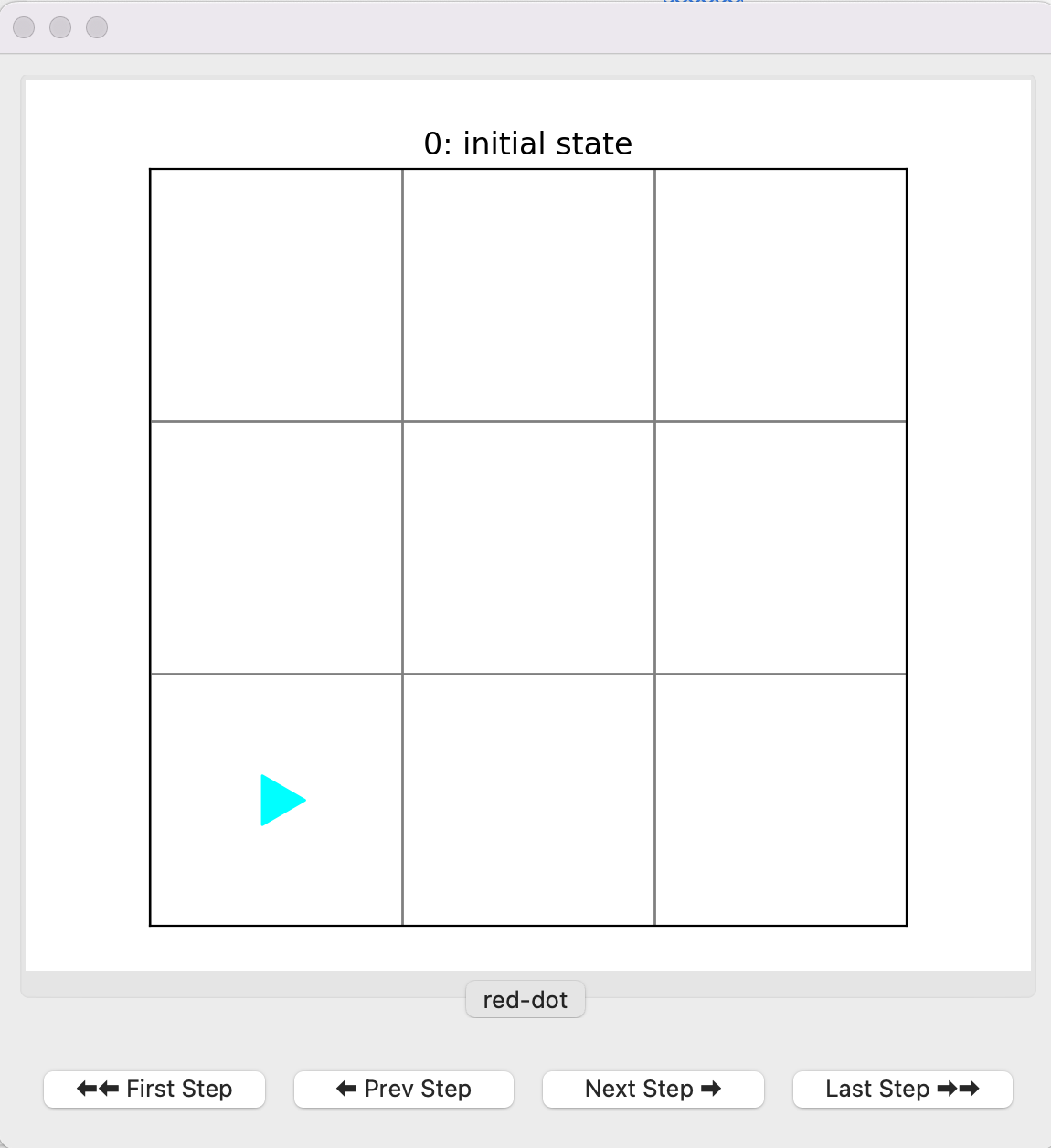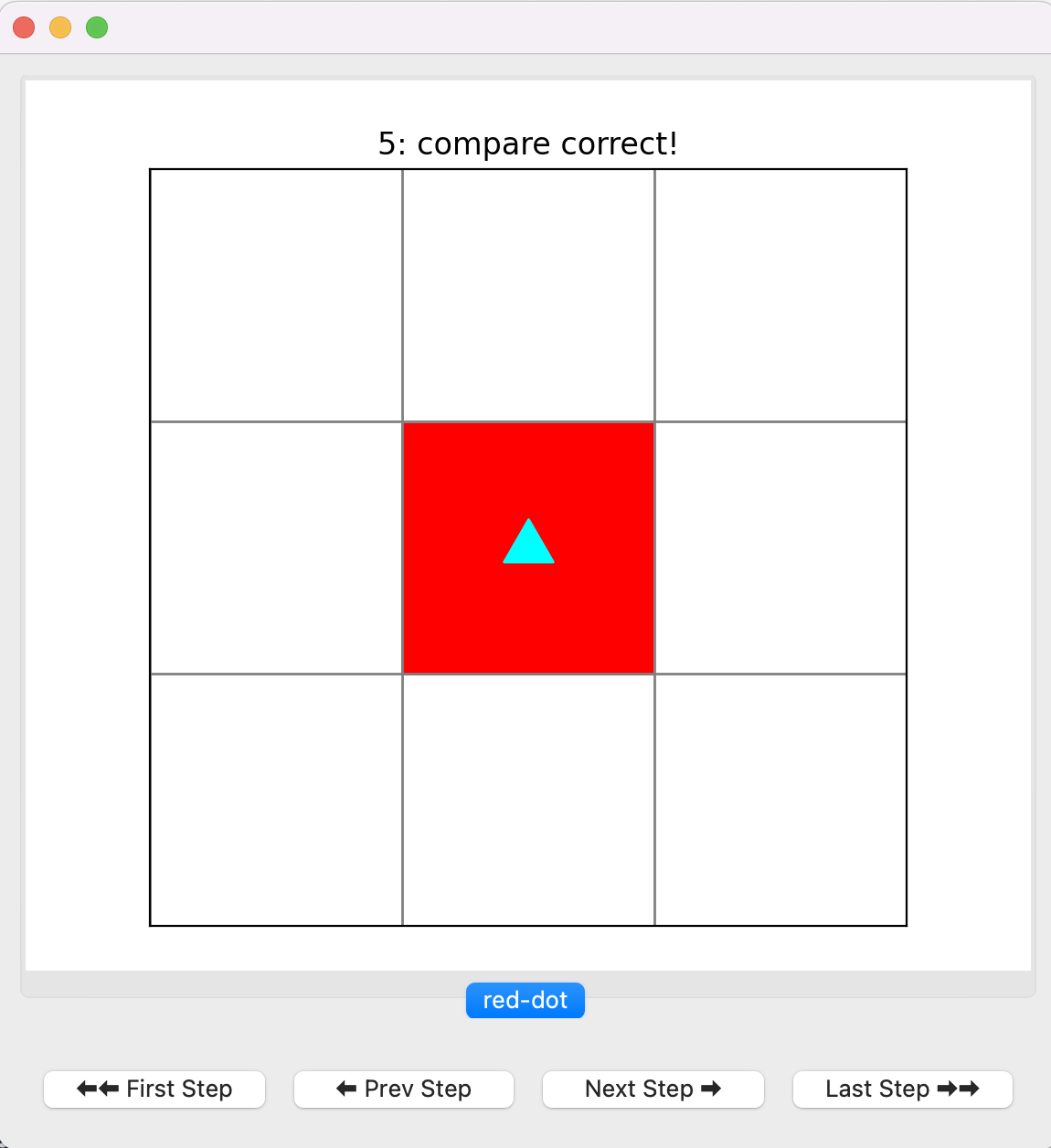Bit Reference
The byubit library helps you learn to program by drawing pictures and solving
puzzles. Bit works in a “world” of squares:

You can think of Bit as a robot, in the shape of a triangle. Bit has a position and a direction. In the picture above, Bit is at the bottom left, facing right.
Installing byubit
The most reliable way to install byubit is through PyCharm. Open the
File->Settings (Windows) or File->Preferences (MacOS) menu and select
Project. You should see a your Conda environment and a list of packages
installed in that environment:

Click the + and then type in byubit. Then click Install Package.
Importing Bit
To use Bit, you always need to import it using the following:
from byubit import BitRunning Bit in a world.
You run bit in a world using:
@Bit.run(world-name)
def function_name(bit):
# write some code hereFor example, you can run Bit on the red-dot world using a function called
red_dot like this:
@Bit.run('red-dot')
def red_dot(bit):
# Implement me!
passThis loads a world from a file called red-dot.start.txt. You can then write
code in the function to control Bit.
Moving Bit
You can move and turn Bit using the following functions:
bit.move()— move forward one spacebit.right()— turn right (without moving)bit.left()— turn left (without moving)
This example moves Bit a few spaces and turns:
bit.move()
bit.left()
bit.move()
bit.right()
bit.move()Painting colors
You can use the following functions to change the colors of squares:
bit.paint(color)— paint the color of the current square; valid colors are ‘red’, ‘green’, and ‘blue’bit.get_color()— returns the color of the current squarebit.erase()— erases the color of the current square
This example paints the current square red:
bit.paint('red')This example gets the color of the current square and stores it in a variable:
current_color = bit.get_color()Checking colors
You can check the color of the current square:
bit.is_red()— returns true if the current square is redbit.is_blue()— returns true if the current square is bluebit.is_green()— returns true if the current square is green
This example moves until the current square is not red:
while bit.is_red():
bit.move()Checking if a square is clear
Bit can’t move if the square in front of it is black, or if it reaches the end of its world. You can use the following methods to check squares near Bit:
bit.front_clear()— checks if the square in front of Bit is clear (not black, not the end of the world)bit.right_clear()— checks if the square to the right of Bit is clearbit.left_clear()— checks if the square to the left of Bit is clear
This example moves Bit until it reaches the end of the world:
while bit.front_clear():
bit.move()Stepping
You can use the graphical Bit interface to step through every command that you give to Bit. By default, the interface runs your entire program and stops at the end:

This shows that you are running the red-dot world and that your finish state
matches the solution (“compare correct!”). You can use the Prev Step and
Next Step buttons to go backwards and forward. You can use the First Step
and Last Step buttons to go to the beginning or end.
Snapshots
You can create a snapshot of the current bit state using:
bit.snapshot(name)— creates a snapshot with the given name
Imagine you are trying to move Bit to the top right corner. This example creates
a snapshot called halfway that stops after Bit should have reached the right
side.
while bit.front_clear():
bit.move()
bit.snapshot('halfway')
bit.left()
while bit.front_clear():
bit.move()This is helpful for debugging because you can go right to a particular point of your code instead of stepping through everything one command at a time.
Summary
@Bit.run(world-name)
def function_name(bit):
# write some code here- Moving
bit.move()— move forward one spacebit.right()— turn right (without moving)bit.left()— turn left (without moving)
- Painting
bit.paint(color)— paint the color of the current square; valid colors are ‘red’, ‘green’, and ‘blue’bit.get_color()— returns the color of the current squarebit.erase()— erases the color of the current square
- Checking Colors
bit.is_red()— returns true if the current square is redbit.is_blue()— returns true if the current square is bluebit.is_green()— returns true if the current square is green
- Checking if a Square is Clear
bit.front_clear()— checks if the square in front of Bit is clear (not black, not the end of the world)bit.right_clear()— checks if the square to the right of Bit is clearbit.left_clear()— checks if the square to the left of Bit is clear
- Snapshots
bit.snapshot(name)— creates a snapshot with the given name